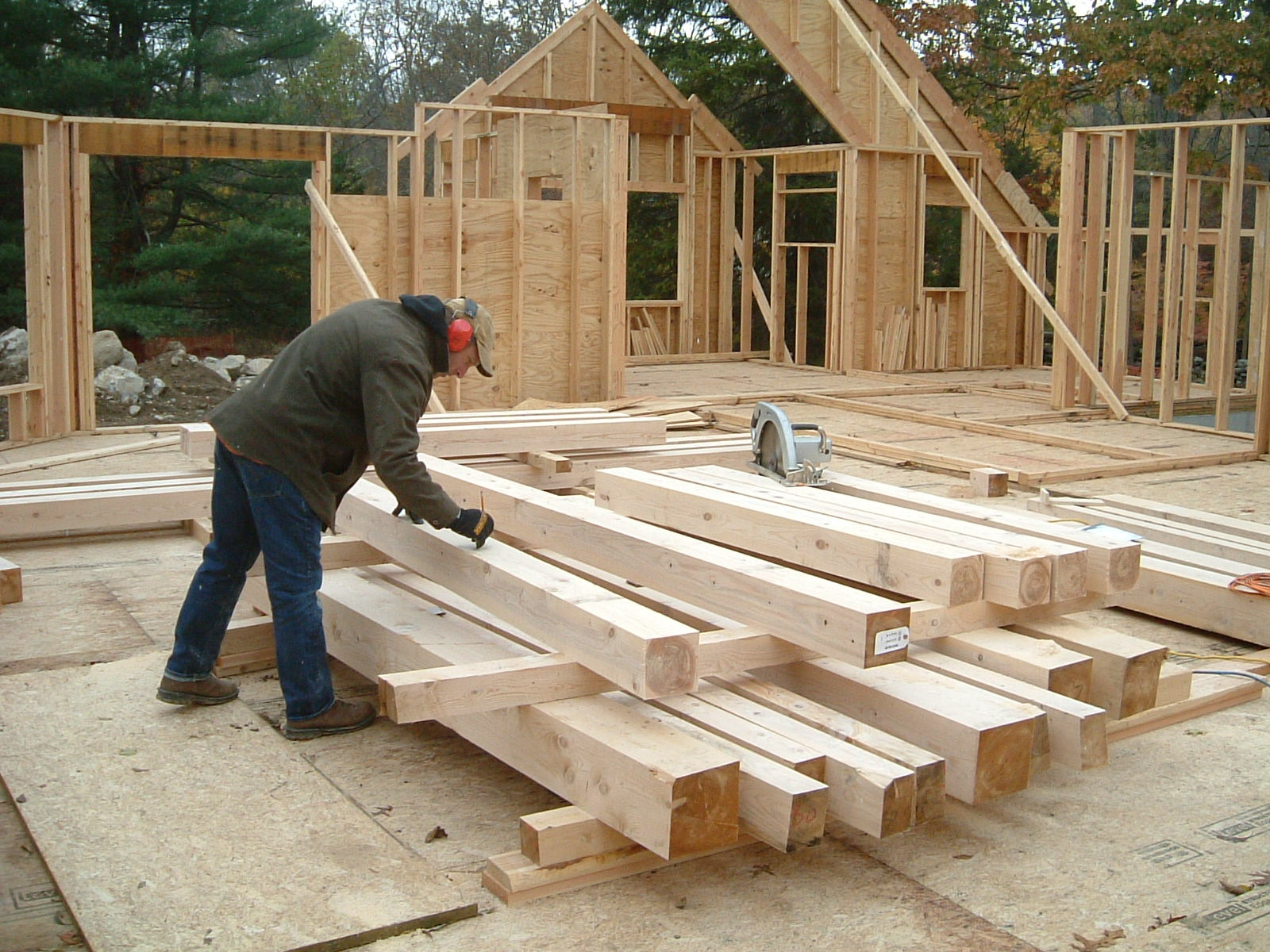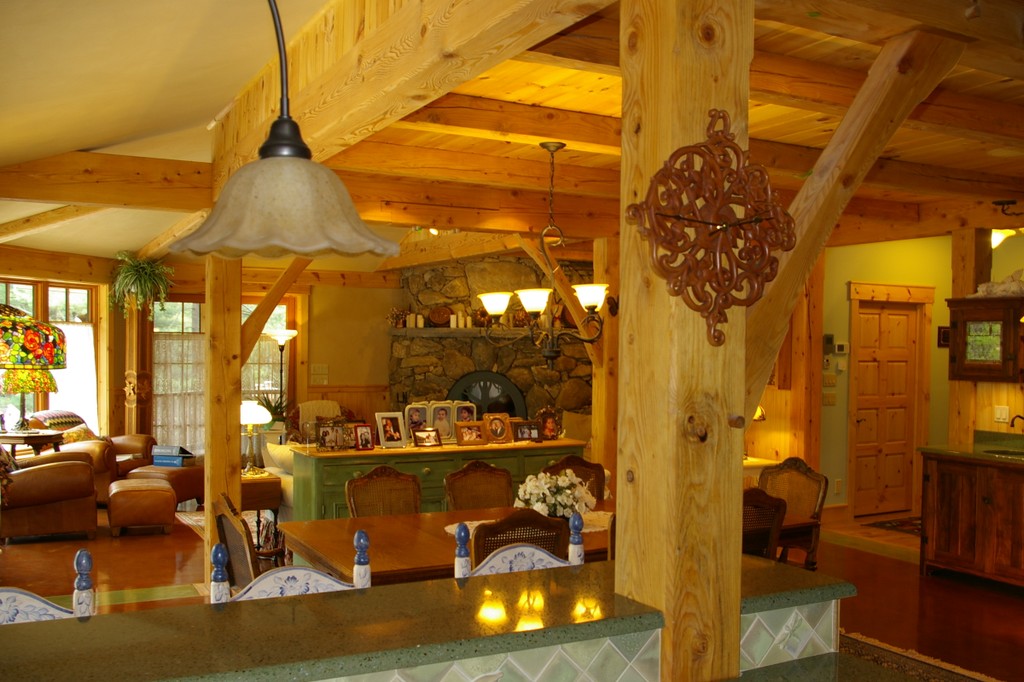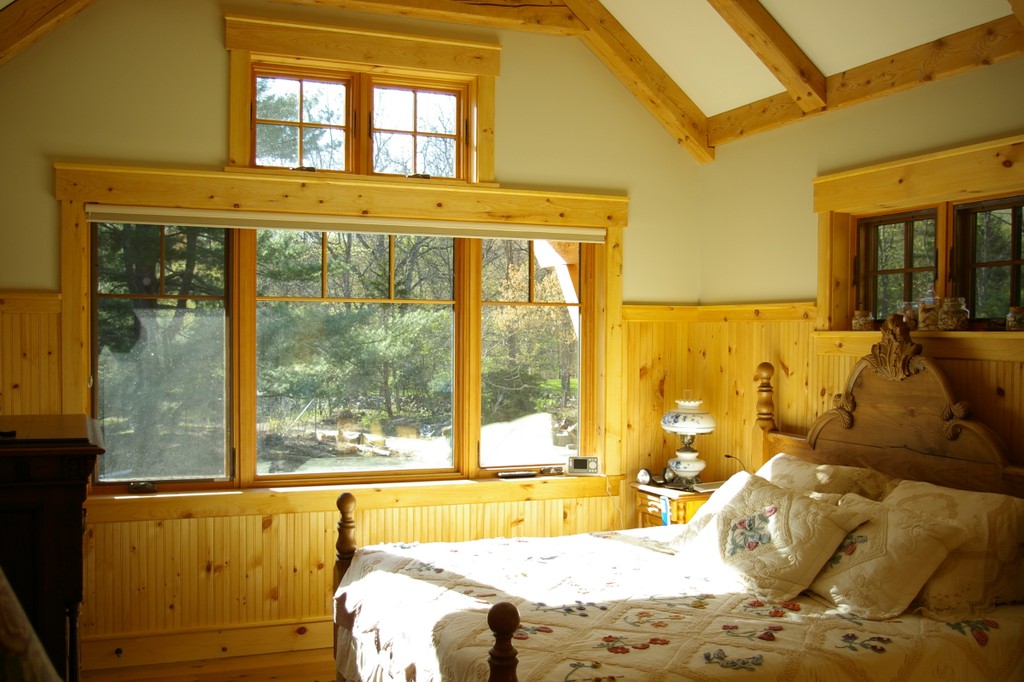Project Description:
This Adirondack-style home in idyllic New Canaan, CT is a laudable example of achieving luxurious living with minimum environmental impact. The near net-zero energy custom home aimed to carry out the vision of environmental stewardship from homeowners Etta and Nate Kantor. The home received the highest accolades from the industry: LEED for Homes Platinum and the National Green Building Standard Emerald certifications through verification services provided by Steven Winter Associates, Inc. (SWA). The home was also a contender for Connecticut’s Zero Energy Home of the Year (HERS Index 14, or 86% savings over code).
To showcase the achievement in efficient planning by Edgcomb Design Group and construction services by BPC Green Builders, the Kantor residence has become home to educational workshops and tours from CT Clean Energy Fund, CT Green Building Council, and Fairfield University.
The most noteworthy green features include solar thermal panels that heat a 1,000 gallon water tank, which, not unlike a battery, store heat for the house, domestic hot water, and pool; a pellet boiler with automatic feed to supply any demand not met by the solar system; a waste-water heat recovery from the master shower; a composting toilet and greywater storage tank; and local, low-emitting, sustainably-grown and harvested interior finishes. Half of the roof’s runoff is collected in cisterns, and rain gardens control excess storm water.
During construction, 90-percent of waste was diverted from landfills. A specialized contractor was hired to design the fireplace, giving the home a pleasant aesthetic while minimizing typical energy loss. A recycled rubber and plastic roof that resembles slate shingling boasts 14 photovoltaic panels, and an additional set in the backyard provides heating for the pool. Overall, 94.2-percent of the home’s energy needs are met by solar technologies.
Building Type Summary:
Address:
Elevation:
Lat. / Long.:
Location Type:
Climate Region:
Conditioned Building Volume:
Multiple buildings?:
Total number of units in project (all buildings):
Total floor area of project (all buildings):
Historic?:
Completion date:
Materials:
A recycled rubber and plastic roof that resembles slate shingling. During construction, 90-percent of waste was diverted from landfills.
Energy Highlights:
Triple-insulated windows; PV panels; High performance envelope; Solar thermal; Pellet boiler; Waste water heat recovery; Composting toilet; Greywater system
HERS Index:
Annual renewable energy generated:
Subslab assembly:
Basement slab has been thermally isolated from the ground below and other structural penetrations using 2” XPS insulation (R10), at the slabs perimeter using 2” high compressive strength closed cell rigid foam insulation (R10).
Foundation wall assembly:
Foundation walls are manufactured offsite by Superior walls, then installed by crane, consisting of 10-1/4” thick wall with high strength concrete studs at 24” OC, incorporating a continuous 1” XPS insulation (R5) at the exterior of the wall behind 1-3/4” of high strength concrete, leaving a 7-1/2” deep cavity for electrical wiring and additional insulation. These walls are then strapped using 2x6’s ripped in half, placed horizontally at 24” OC to increase the exterior walls thermal resistance.
Above grade wall assembly:
Stick framed walls consist of 2x6’s spaced at 24” OC using FSC rated lumber also strapped using 2x6’s ripped in half, placed horizontally at 24” OC to increase the exterior walls thermal resistance.
Floor framing consists of 16” and 14” open web trusses spaced at 24” OC to limit structural framing issues and provide pathways for mechanical and electrical routing within the homes envelope.
Exterior wall insulation is proposed to be: 8.5” of cellulose (R30.6) or 0.5 lb foam (R32.3) within foundation wall cavities [R37 total], 2” of 2lb foam (R13) plus 5” of cellulose (R18) [R31 total] or 7” of 0.8 lb foam (R31.5 total) for stick framed wall cavities.
Space heating - Manufacturer & Model:
Space cooling - Manufacturer & Model:
Domestic hot water - efficiency:
Ventilation - Manufacturer & Model:
Special architectural measures:
14 photovoltaic panels are on the rooftop.
Subslab R-value:
Slab edge R-value:
Foundation wall R-value:
Above grade wall R-value:
Average window U-factor:
Solar Heat Gain Coefficient:
Project Photos:




Renewable Energy Sources:
Roof Assembly:
Roof framing consists of 2x12’s spaced at 24” OC also strapped using 2x6’s ripped in half, placed horizontally at 24” OC to increase the exterior walls thermal resistance. Exterior roof insulation is proposed to be: 3” of 2lb foam (R19.5) plus 10” of cellulose (R36) [R57.5 total] or 13” of 0.8 lb foam (R58.5 total)
Roof R-value:
Window Description:
Exterior windows and French doors have triple insulated low-E glazing with aluminum clad Doug fir frames and are made by Loewen.

Mechanical Equipment Installation Details and Comments:
- Space heating and cooling consists of seven forced air zones served by two variable-speed air-tight air handlers all fully air sealed and located within the conditioned envelope. The homes design heating load is 43.7 MBH and its design cooling load is 23.9 MBH for 5,246 square feet of conditioned space.
- Ventilation is provided by two energy recovery ventilators drawing exhaust air from each bathroom while simultaneously providing fresh air to each air handlers return air stream allowing on demand high flow ventilation for each bathroom or continuous ventilation for the entire home.
- A 2-1/4” thick concrete thermal mass / radiant floor below the dining/great room is designed to store winter daytime solar gain, when available, while also providing radiant hot water heating when required. Radiant hot water heating in the master bathroom floor overrides forced air heating in this room only.
- Baseline heating plant consists of 14 AET AE-32 solar thermal flat plate collectors (448 square feet) roof mounted high on a 10/12 slope configured in an open loop drain back system tied to one 957 gallon thermal storage tank. Backup heating plant consists of one Froling P4-38 pellet high-efficiency modulating (92%-95%) hot water boiler. Failsafe heating plant consists of one Heat Transfer 140M Munchkin high-efficiency (95.1% AFUE) modulating gas-fired condensing hot water boiler. Baseline heating plant will handle 60% of heating requirements, while the Backup or Failsafe heating plants will handle remainder.
- Domestic hot water is produced by two indirect storage tanks located adjacent fixtures served, heated normally by the baseline heating plant and secondarily by the backup or failsafe heating plant, if required.
- The home has ENERGY STAR refrigerator, dishwasher, & clothes washer. The home's lighting fixtures use either compact fluorescent or LED bulbs for reduced energy consumption.